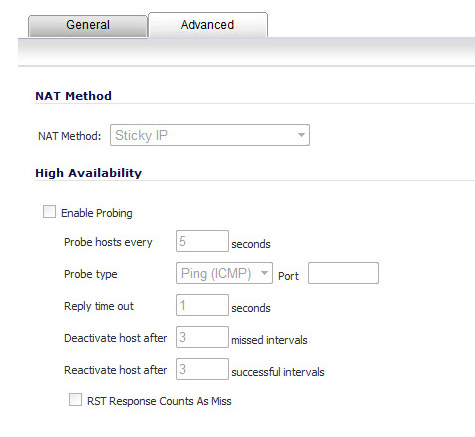
NAT load balancing is configured on the Advanced tab of a NAT policy.
|
NOTE: This tab can only be activated when a group is specified in one of the drop-down fields on the General tab of a NAT Policy. Otherwise, the NAT policy defaults to Sticky IP as the NAT method.
|
SonicOS offers the following NAT methods:
|
•
|
Sticky IP – Source IP always connects to the same Destination IP (assuming it is alive). This method is best for publicly hosted sites requiring connection persistence, such as Web applications, Web forms, or shopping cart applications. This is the default mechanism, and is recommended for most deployments.
|
|
•
|
Round Robin – Source IP cycles through each live load-balanced resource for each connection. This method is best for equal load distribution when persistence is not required.
|
|
•
|
Block Remap/Symmetrical Remap – These two methods are useful when you know the source IP addresses/networks (for example, when you want to precisely control how traffic from one subnet is translated to another).
|
|
•
|
Random Distribution – Source IP connects to Destination IP randomly. This method is useful when you wish to randomly spread traffic across internal resources.
|
|
•
|
NAT Method – This drop-down allows the user to specify one of five load balancing methods: Sticky IP, Round Robin, Block Remap, Symmetric Remap, or Random Distribution. For most purposes, Sticky IP is preferred.
|
|
•
|
Enable Probing – When checked, the SonicWall will use one of two methods to probe the addresses in the load-balancing group, using either a simple ICMP ping query to determine if the resource is alive, or a TCP socket open query to determine if the resource is alive. Per the configurable intervals, the SonicWall can direct traffic away from a non-responding resource, and return traffic to the resource once it has begun to respond again.
|